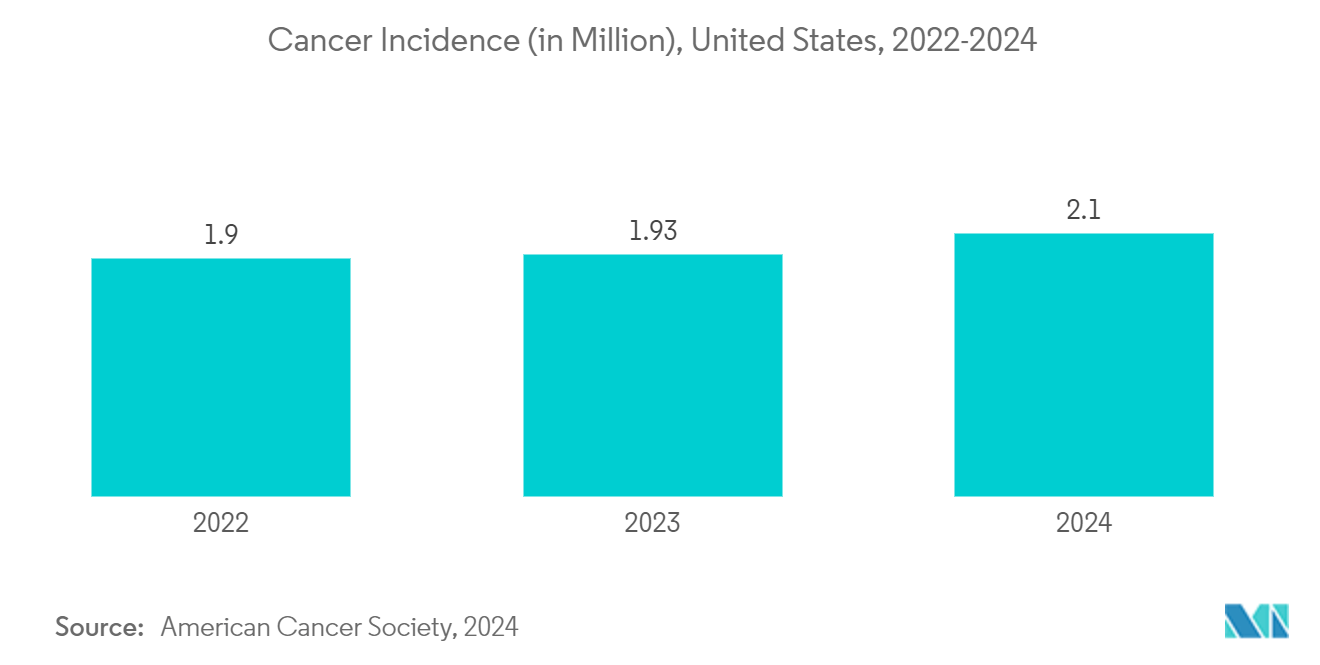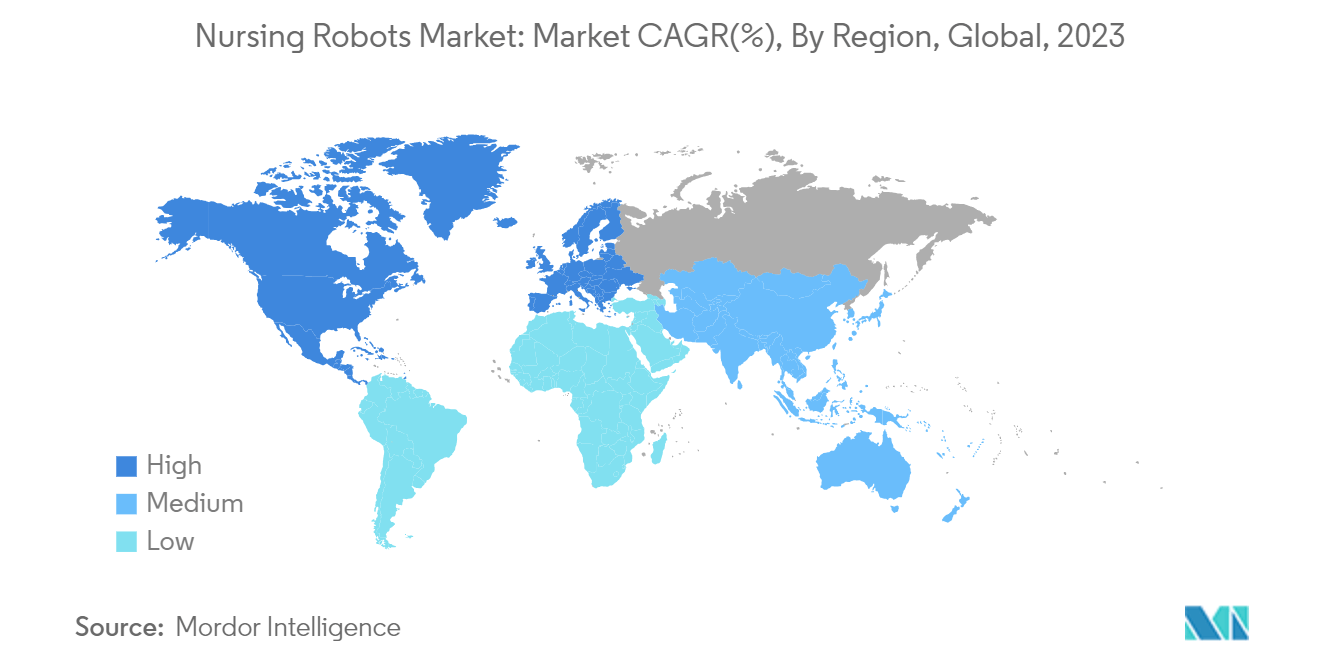Market Trends of Nursing Robots Industry
The Daily Care and Transportation Segment is Expected to Witness Significant Growth During the Forecast Period
Factors such as the increasing burden of chronic diseases, a growing aging population needing support for daily activities and transportation, advancements in nursing robotics, artificial intelligence, and sensor technology, and the rising adoption of nursing robots in healthcare settings are expected to drive the growth of the daily care and transportation segment.
Various studies have evaluated the effectiveness of transfer nursing robots in healthcare facilities. For instance, an April 2024 article published in Robotics and Autonomous Systems highlighted that transfer nursing robots have attracted notable attention due to challenges from an aging population and a caregiver shortage. These robots have proven effective and safe for moving elderly individuals or patients with mobility challenges, facilitating transfers between beds, wheelchairs, and operating tables. Such findings are poised to boost the demand for nursing robots in daily tasks and transportation, further fueling the segment's growth.
Research centers and robotic academies are increasingly focusing on developing advanced nursing robots capable of performing complex tasks, making them appealing in healthcare settings. For instance, in February 2024, the Frontier Research Center of Toyota Motor Corporation is developing a robot called Potaro that can transport medication instead of relying on human nurses to reduce their workload. Potaro handles an average of 170 transports per day and can operate in conjunction with over 200 cameras, elevators, doors, and other infrastructures. Potaro consists of a system built to assist Potaro in transporting smoothly by using ceiling cameras to check the situation in narrow corridors in advance. Thus, the development of such nursing robots that can transport large quantities of medicine for patients provides nurses time to interact as much with patients, hence bolstering the segment's growth.
Therefore, owing to the rising number of research studies evaluating the effectiveness of nursing robots in healthcare facilities and the adoption of nursing robots across hospitals and technology advancements, the studied segment is expected to grow during the forecast period. Domestic Ambidextrous Manipulator (ADAM) to assist people with basic daily tasks. ADAM is an indoor mobile robot and is capable of navigating around space and assisting with tedious or complicated domestic tasks such as carrying objects, moving furniture, pouring drinks, and preparing food. ADAM can work collaboratively with other robotic platforms by communicating with them for tasks where more than one robot is needed. It is designed to respond to a rapidly aging population, leveraging technological innovations to offer new levels of assistance to the elderly and infirm. Such technologically advanced daily care robots are expected to have a positive impact on the segment’s growth during the forecast period.
Therefore, owing to the rising number of research studies evaluating the effectiveness of nursing robots in healthcare facilities and the adoption of nursing robots across hospitals and technology advancements, the studied segment is expected to grow during the forecast period.

North America is Expected to Hold a Significant Share in the Market During the Forecast Period
North America is expected to witness significant growth in the nursing robots market. These factors include the growing aging population, ongoing shortages of healthcare professionals, especially nurses, across healthcare facilities, and rapid advancements in robotics, artificial intelligence, and automation technologies.
In addition, the presence of well-established healthcare infrastructure and spending, increasing investment in healthcare technology, and growing emphasis on patient experience and outcomes drive the integration of nursing robots in the region, further propelling the market's growth.
The deployment of nursing robots is expected to enhance the presence of advanced robotics in healthcare facilities in the region, driving the market's growth in the coming years. For instance, in October 2023, Lancaster General Hospital, a US-based hospital, introduced two nursing robots, Roxy and Rosie. These robots assist with routine non-clinical tasks, like picking up and delivering supplies, allowing nurses to concentrate on patient care. This adoption of nursing robots by hospitals highlights their increasing demand and signals a bullish trend for market expansion during the forecast period.
Similarly, in January 2023, MultiCare Health System, a not-for-profit American healthcare organization, unveiled four Moxi robot assistants. Moxi, equipped with an arm, gripper hand, and mobility features, adeptly transports lightweight medical resources, navigates hospital corridors, and delivers items to nurses and staff. The successful integration of such nursing robots in clinical environments underscores their efficacy, prompting other facilities to consider similar investments, thus driving the market's growth.
Moreover, robotics academies and research centers are intensifying their efforts to develop advanced nursing robots capable of executing intricate tasks, thereby boosting their desirability in healthcare. For instance, in June 2023, Relay Robotics Inc. unveiled its latest hospital robot, RelayRx, during the American Society of Health-System Pharmacists (ASHP) Summer Meetings and Exhibition. Relay robots efficiently handle deliveries across the facility, from pharmacies and labs to various departments. Such technologically advanced nursing robots are projected to positively influence the segment's growth in the coming years.
In conclusion, with the surge in nursing robot launches and continuous technological advancements in robotics, the market in North America is set for substantial growth during the forecast period.


